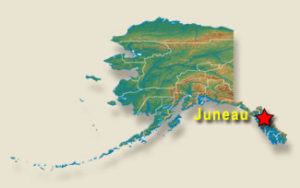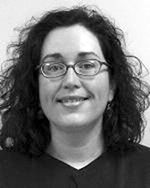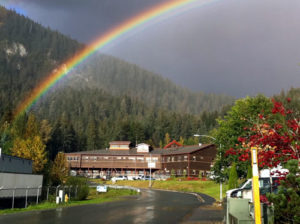.
|

Bartlett Memorial Hospital, www.bartletthospital.org, is the community owned hospital approved for 55 acute care beds services the area. In March of 2008 construction was finished and doubled the size of the hospital including a new emergency room, critical care unit, state of the art diagnostic imaging center, and remodeled obstetrical unit. The building also includes an inpatient mental health unit.
|
What to Expect:
Each family physician on staff rotates as the “hospitalist” and the WRITE students round with them. There are opportunities to assist in surgery on call. The Behavioral Health Department is staffed by a psychiatrist, psychologist, and nurse practitioners. The Alaska Native Medical Center field clinics are held in Juneau about two times per month, providing the opportunity for WRITE students to work with consulting specialists.
Size & Location:
Juneau is located in the Panhandle of Southeast Alaska, 900 air miles north of Seattle and 600 air miles south of Anchorage. Juneau lies on a small strip of land between sea level and 3,800 feet peaks. Of Juneau’s entire 3,248 square mile size, there are 928 square miles of ice cap, 704 square miles of water, and only 264 square miles of urban development. Another 1,352 square miles are wildnerness and rainforest. To see a map of where we are located and/or get directions from other locations, go to maps.google.com (for directions, click “Get Directions” in the upper left-hand corner where you can input the starting address).
Transportation:
Alaska Airlines has several northbound and southbound flights per day. The Alaska Ferry system provides daily service in and out of the community.
Housing:
Efficiency Apartment
Interesting Facts:
Juneau was established as the State Capital in 1900 and was originally a mining community. It has no road access. Approximately thirty one thousand people live in the Juneau Borough, which covers 2,700 square miles (that is 11 people per square mile). One quarter of the population is under 18 and the median income is sixty thousand dollars mainly from fishing, the service industry and government employment. Juneau has a robust tourism industry in the summer from the cruise lines. It is common to have two Alaska Cruise Ships each with 2,000-4,000 tourists in town at one time. During the annual January to May legislative session, the community again increases with legislators, their staffs, lobbyists, and other interested parties.
Extracurricular Activities: www.juneau.org
- Alaska State Museum
- House of Wickersham
- Juneau-Douglas City Museum
- Patsy Ann Statue
- Mt. Roberts Tram
- Trails
Weather Trends:
Juneau has a mild, maritime climate. The mean annual temperature is 55 degrees Fahrenheit. Winter temperatures seldom drop below 20 degrees Fahrenheit and summer temperatures seldom exceed 65 degrees. Abundant rainfall contributes to the growth of very large Sitka spruce and Western hemlock in the coastal forests and to abundant fish populations in local waters. Snowfall is heavy in most winters, averaging 101 inches. Statistically, June is the month with the least rainfall. Juneau does not have the “midnight sun” experienced further north in Alaska, but day length is much longer in the summer and much shorter in the winter than in the “Lower 48” states. |

 Email:
Email: 
